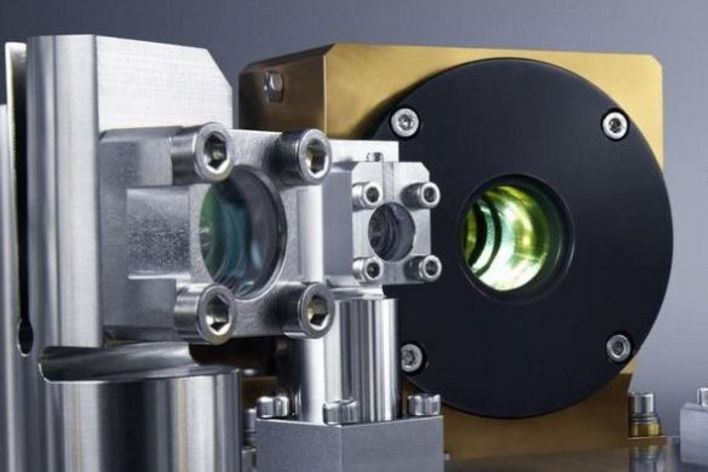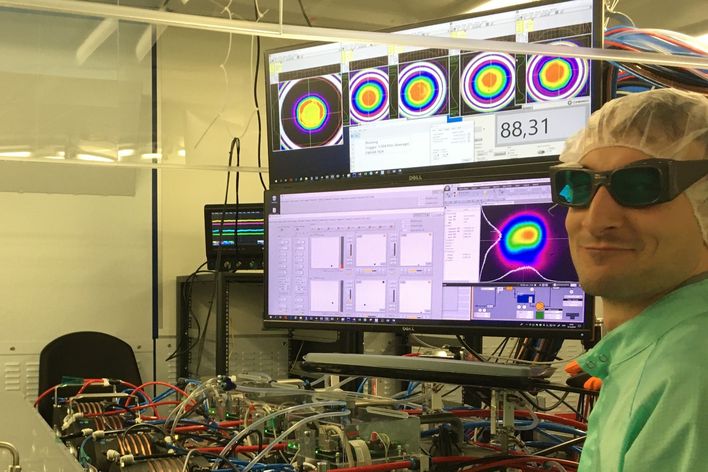Everyone’s heard of infrared waves and microwaves. Well, sandwiched between those two in the electromagnetic spectrum there is a group of waves with frequencies somewhere between 0.1 and ten terahertz. These are what we call terahertz waves, and they have a number of interesting properties. For example, they are an excellent option for scanning living systems and obtaining imaging techniques for biochemistry. Unfortunately, researchers in the past have tended to somewhat neglect terahertz waves.
Why is that?
Terahertz waves are hard to produce and difficult to use. One problem relates to the fact that terahertz waves have rather long wavelengths. That makes it hard to focus them down into a small area, so they are more challenging to use than typical laser beams. For example, they do an amazing job of getting absorbed by water, and consequently by airborne water droplets–in other words the normal humidity in the air. So the light gets lost very quickly, disappearing almost entirely after just a few meters of air, or a few millimeters of water. So to actually measure anything in biological conditions with terahertz waves you have to pump lots of power into them–and that brings us on nicely to the beam source.
Great, tell us more!
Here in Bochum and elsewhere, 200 scientists are working in one huge research cluster to understand the influence of solvents on biochemical processes. My group’s job is to build more powerful terahertz sources which the other researchers can then use for measuring purposes. Our primary goal is to create a tool for observing the dynamics of molecules, in other words the changes from one state to another over time. Put simply, we want to make biochemical videos. The best tool for doing that is one that uses pulsed terahertz waves. Specifically, very short ones with exactly the right frequency and high-power values. To do this, we feed our system with a near-infrared femtosecond laser. We fire the pulses through a non-linear crystal that converts them into terahertz pulses. Perform a few more electro-optical tricks–technically referred to as terahertz time-domain spectroscopy–and you can use those pulses to measure things. Our pulses are special because we have demonstrated for the first time that it is actually possible to achieve relatively high-power values of dozens of milliwatts. And we haven’t finished yet–now we’re aiming to get that up to the watt level.
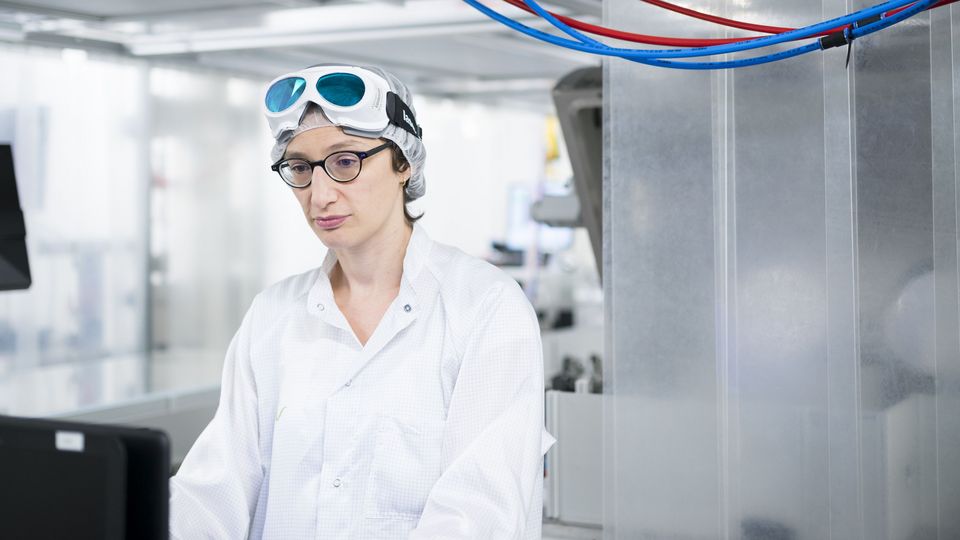
Clara Saraceno is a Professor of Photonics and Ultrafast Laser Science at Ruhr-Universität Bochum (RUB). (Source: TRUMPF)
© Carsten Behler, cb@carstenbehler.de
How did you manage to push the power so high?
We were the first to use a high average power laser in time-domain spectroscopy. Nobody dared to do that before because it’s so hard to control a system with so much power. We built our own laser using TRUMPF components with more than 100 watts of average power and operating with a very high repetition rate of 13 megahertz. The terahertz pulses it produces will help researchers gain fundamentally new insights.
But why use terahertz waves in the first place? What are you hoping to discover about the world?
Nobody really knows how water works–it’s an old scientific puzzle that has never been solved. Water forms such an integral part of our everyday lives, and yet nobody understands it! It’s really quite amazing. For example, water has a very high boiling point and various density anomalies, which is why ice floats on liquid water. We still don’t understand how these macroscopic characteristics of water, which are so fundamentally important to life, tie together with the microscopic properties on the molecular level. Water is very complex. H2O itself is a simple molecule, but water molecules talk to each other in a tremendously complicated way. The oxygen atom of one water molecule can easily interact with a hydrogen atom of a different water molecule. And that’s where it gets really interesting, because these intermolecular bonds–the movements that take place on that level–are exactly in the terahertz frequency!
And it’s those movements you want to observe?
Absolutely. We want to film them and draw some conclusions on how water works. And, as well as those general findings, we’re also interested in the specific role water plays in the body’s cells.
What do you hope to discover by peering into the body’s cells?
Water in cells acts as a solvent for proteins, and proteins need water to work properly. That’s one of the reasons why we can’t survive without drinking. For a long time, people thought water was just a passive, background presence in the body. But that’s not true. Take protein folding in cells, for example. Today, we understand that water actively influences when and how proteins fold. In some diseases, such as Alzheimer’s disease, the proteins do not fold properly. Might that have something to do with the intermolecular bonding of water in the body? That’s one of the key questions we’re trying to answer.
If you succeed, what could your findings be used for?
Well, as a fundamental researcher I’m always careful about making predictions as to where research might lead. Ultimately, we don’t know. But that doesn’t make the question any less interesting! In the case of Alzheimer’s disease, for example, I could imagine some distant future where we might be using a terahertz light source to prevent protein folding problems and stop the disease from progressing. Focusing more specifically on the field of laser technology, I want to gain a more in-depth understanding of how we use light as a tool to control phenomena in biology and chemistry. It’s all pretty exciting!
Indeed it is! Of course you’re not the only ones producing new kinds of images on a molecular level. Your colleagues working on x-ray research are also making huge progress with the disk laser. Are they your competitors?
Goodness me, no! Quite the opposite. X-rays are great for observing structural changes, but terahertz waves are better for distinguishing complex coupled motions. So there’s every reason to suppose we will be combining these two techniques at some point.
Every researcher experiences a magical moment at some point in their career. What was yours?
I’m hoping there’s something really big still ahead of me! But I’ve had a couple of modest magical moments already. In my work, I focus on beam sources, which may sound a bit boring. But you can’t do much without the right measuring instruments, can you? It’s always an amazing feeling for me when the laser systems I build reach a level of performance that nobody has ever achieved before. I find myself standing in the lab and thinking “that really is five times more power than anyone has ever got out of this source”. And that’s pretty cool!
Und diese Bewegungen wollen Sie jetzt beobachten?
Ganz richtig. Wir wollen sie filmen und daraus Schlüsse ziehen, wie Wasser funktioniert. Neben der prinzipiellen Erkenntnis interessiert uns speziell das Wasser in Körperzellen. Was möchten Sie beim Blick in die Körperzelle herausfinden? Das Wasser in den Zellen fungiert als Lösungsmittel für Proteine: Proteine funktionieren nur in Wasser. Das ist letztlich übrigens der Grund, warum wir trinken müssen. Lange hielt man Wasser nur für einen passiven Akteur im Körper. Aber das stimmt nicht. Ein Beispiel: Proteine falten sich in den Zellen. Inzwischen wissen wir, dass Wasser aktiv beeinflusst, wann und wie sie sich falten. Bei manchen Krankheiten, etwa bei Alzheimer, sind diese Faltprozesse gestört. Hat das was mit der intermolekularen Bindung des Wassers zu tun? Das ist eine der großen Fragen, die wir uns stellen.
Und was wird man mit diesem Wissen anfangen?
Ich bin Grundlagenforscherin. Als solche bin ich vorsichtig mit Prognosen, wohin das alles führen wird. Wir wissen es nicht. Interessant ist die Frage natürlich trotzdem. Für das Beispiel Alzheimer könnte ich mir in fernerer Zukunft vorstellen, dass wir mit einer Terahertz-Lichtquelle vielleicht einmal die Fehlfaltungen der Proteine verhindern, also die Krankheit stoppen. Was den engeren Bereich der Lasertechnik betrifft, will ich ein tieferes Verständnis dafür gewinnen, wie wir Licht als Steuerungsinstrument in der Biologie und Chemie einsetzen. Spannend, oder?
In der Tat! Dennoch sind Sie ja nicht die einzigen, die auf Molekularebene neuartige Bilder schaffen. Ihre Kollegen aus der Röntgenforschung machen gerade mit dem Scheibenlaser riesige Fortschritte. Sind das Ihre Konkurrenten?
I wo, gar nicht. Ganz im Gegenteil: Mit Röntgenstrahlen können Sie prima strukturelle Veränderungen betrachten, Terahertzwellen sehen dafür komplexe gekoppelte Prozesse besser. Es spricht also sogar alles dafür, diese Techniken irgendwann zu kombinieren.
Jeder Forscher erlebt einmal einen magischen Moment. Welcher war Ihrer?
Puh, ich hoffe der ganz große kommt noch! Aber ein paar kleine gab es schon. Ich arbeite ja an Strahlquellen. Das klingt vielleicht langweilig, aber ohne die richtigen Messinstrumente geht nicht viel. Für mich ist es immer toll, wenn die Lasersysteme, die ich baue, eine Performance erreichen, die vorher noch nie jemand geschafft hat. Dann stehst du in deinem Labor und denkst: Das da ist jetzt fünfmal mehr Power, als je einer zuvor aus dieser Quelle herausgeholt hat. Das ist schon geil.
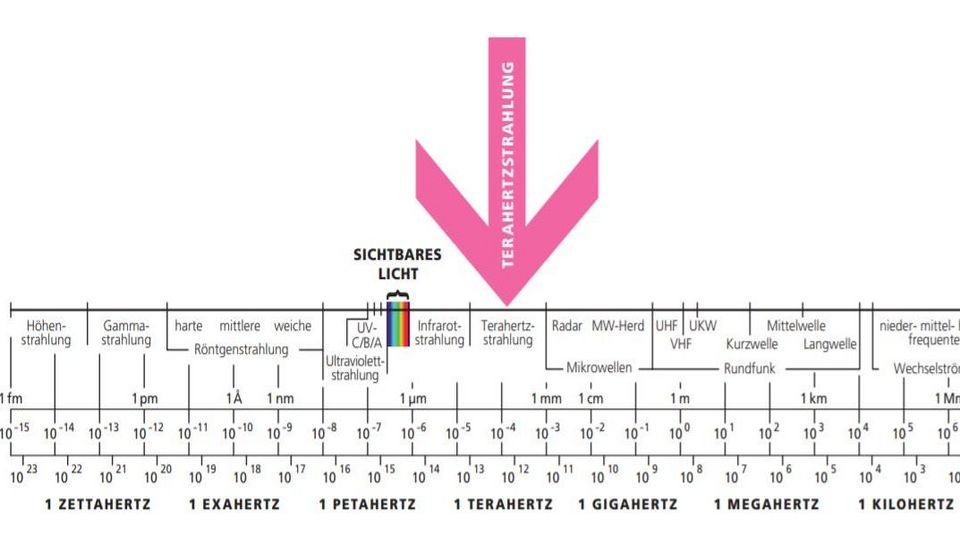
Terahertz waves lie in the frequency range between infrared and microwaves. The boundaries are not precisely defined, but in many cases we define terahertz waves as those with frequencies between 0.1 and ten terahertz and a wavelength of between a few hundred and one thousand microns. Accordingly, the photon energy of terahertz waves stretches from just a few to several tens of milli-electronvolts.
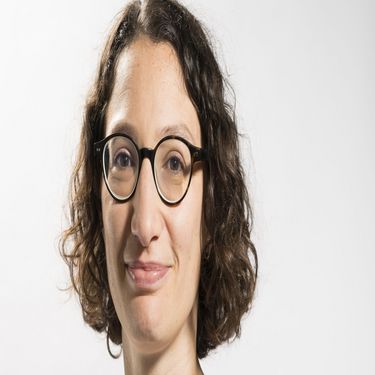
Clara Saraceno is a Professor of Photonics and Ultrafast Laser Science at Ruhr-Universität Bochum (RUB). As part of a research cluster, she is working on ways of using terahertz light waves in research, for example in biochemistry. Saraceno’s job is to develop more powerful beam sources.




